Inside the Great Hunt for a ‘Minimoon’ in the Middle of the Australian Desert
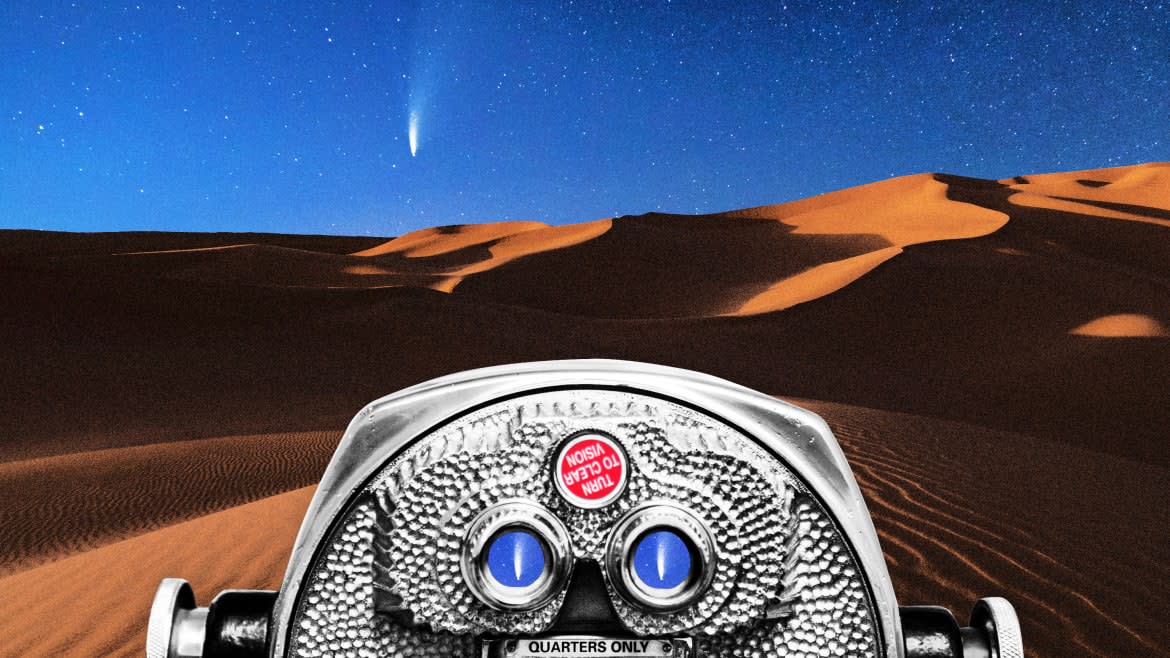
On Aug. 22, 2016, a fireball streaked across the sky over South Australia. A low, bright meteor. It was one of hundreds of space rocks that plunge through Earth’s atmosphere every year—and are big enough to survive the fiery descent.
Earth is mostly water, so most meteors splash down into the middle of the ocean without fanfare. The ones we notice that also land on dry ground are rare and, for astronomers, precious. They’re fragments of the mysterious environment in that vast dark space between the planets in our solar system… or even in the murky reaches beyond the solar system.
The Desert Fireball Network, a loose organization of Australian scientists centered on Curtin University in Perth, went looking for the August 2016 meteorite, which is what we call a meteor after it lands. Noting that the rock had briefly orbited Earth before tumbling toward the desert, they even gave it a clever nickname: Minimoon.
A Short History of Death by Meteorite—and How to Avoid It
They finally found it two years later! Celebrations were in order. Astronomers could add the 1.2-ounce rock, around the size of a AA battery, to their small but growing collection of recovered meteorites, each a piece of the interplanetary puzzle.
But the party didn’t last. DFN’s closer inspection of the meteorite found in the orange Australian desert led to a shocking conclusion. It was a rock from space, for sure. But it was the wrong rock from space.
The meteorite DFN recovered from the sand, roughly inside the predicted impact zone of the 2016 fireball, wasn’t the same meteorite that had caused the fireball. “A rogue meteorite,” is how Martin Towner, a Curtin University research fellow and DFN’s operations manager, described the recovered rock to The Daily Beast.
Incredibly, the Australians went looking for a rare space rock and found an unrelated rare space rock. The odds of that happening are hard to calculate, but the Australian team tried. Spoiler: They’re low.
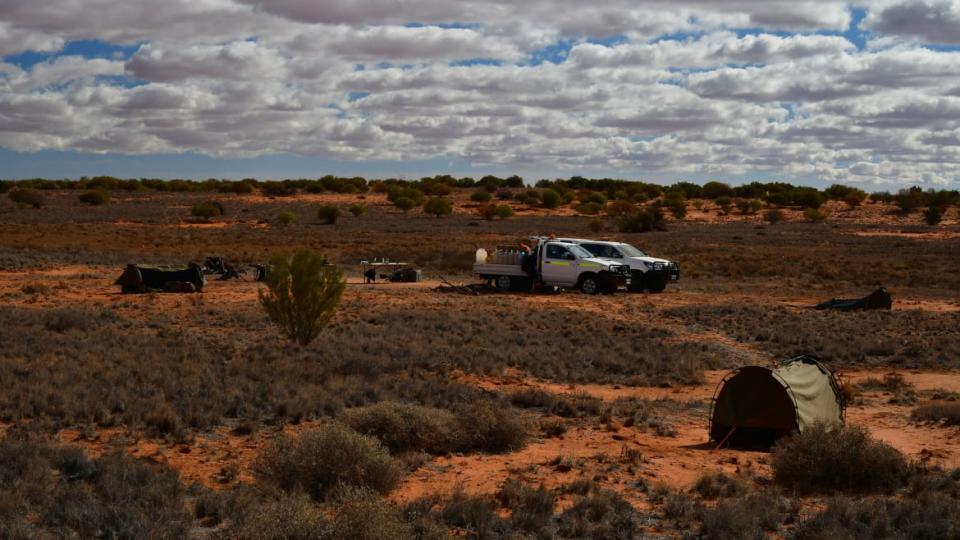
The Desert Fireball Network camped out in the middle of the desert during the search for Minimoon.
Now the Minimoon misadventure stands as a warning. As astronomers scour the planet for meteorites, they need to be careful to trace the origins of each rock. If they connect a meteorite to the wrong fireball—the evidence of a rock’s journey through the atmosphere—they risk drawing the wrong conclusions about the region of space where a given meteor originated. They could corrupt whole fields of science.
“This is a key example to show that fireball-meteorite pairings should be carefully verified,” Towner and other members of the DFN team wrote in a new study.
Calculating the fireball’s trajectory, the DFN team had narrowed the impact zone to an area of around 170 acres. It took a couple years to organize an expedition owing to the extreme remoteness of the impact zone: a two-day trip by car from Perth.
“Searching on the claypans was good,” Towner told The Daily Beast, using a term for a clay-rich depression, “but on the dunes was a bit hit and miss, with some loose sand that could bury things and dense bushes under trees.”
The four-person team crawled over the potential impact zone, looking for the telltale signs of an extraterrestrial rock. Round in shape. Dark in color. Dense and thus heavy. When they finally found a meteorite, after six days of searching, it was just a hundred yards from where they’d expected to find one.
Just in case there were more fragments from the same meteor, the team searched for another two days—and found nothing. They scurried back to their labs to analyze the rock. One obvious test was to judge how smooth the meteorite was. The smoother a space rock is, the longer it’s been on Earth undergoing a slow, steady process of polishing by wind-swept dirt or sand.
The DFN team assessed their newly-recovered meteorite as only “mildly” weathered. “It could have been tempting to put the mild degree of weathering down to the two years it spent on the ground,” the team wrote in its study, (which appeared online on July 12 and hasn’t been peer-reviewed yet). In other words, the smoothness was consistent with a recently landed rock.
The scientists thus had reason to believe they’d found Minimoon. “It was sitting on the sand, it was roughly the right size, in roughly the right place and it looked pretty fresh, and it’s not like you often find meteorites when searching,” Towner said. “So we were pretty happy at the time!”
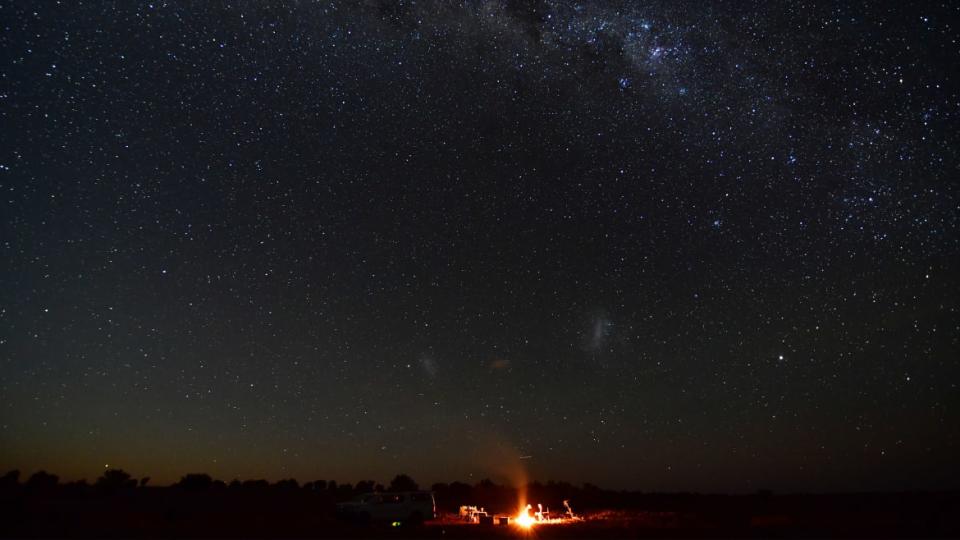
The night sky above the Australian desert.
But the next test shattered their joy. The DFN team chiseled off a quarter-gram chunk of the meteorite, crushed it and burned it. Using a technique called accelerator mass spectrometry, they bombarded the resulting gas with electrons. Different elements picked up varying charges, changing their weight and making it possible to differentiate them.
It’s all very technical, but the upshot, after careful analysis, was that the DFN team could estimate how many fast-decaying radioactive particles the rock still possessed. Certain subatomic particles called radionuclides—from cobalt and manganese atoms, among others—come from space and don’t survive long on Earth.
If a meteorite still has these nuclides, it’s “fresh.” That is, having landed in the last thousand years or so. If it doesn’t have the nuclides, it impacted Earth more than a thousand years ago.
The rock had no telltale nuclides. The DFN team estimated it struck the desert at least 1,900 years ago. In other words, it wasn’t Minimoon. It was an entirely different meteorite that just happened to land in the same area that Minimoon probably did, based on the latter’s trajectory.
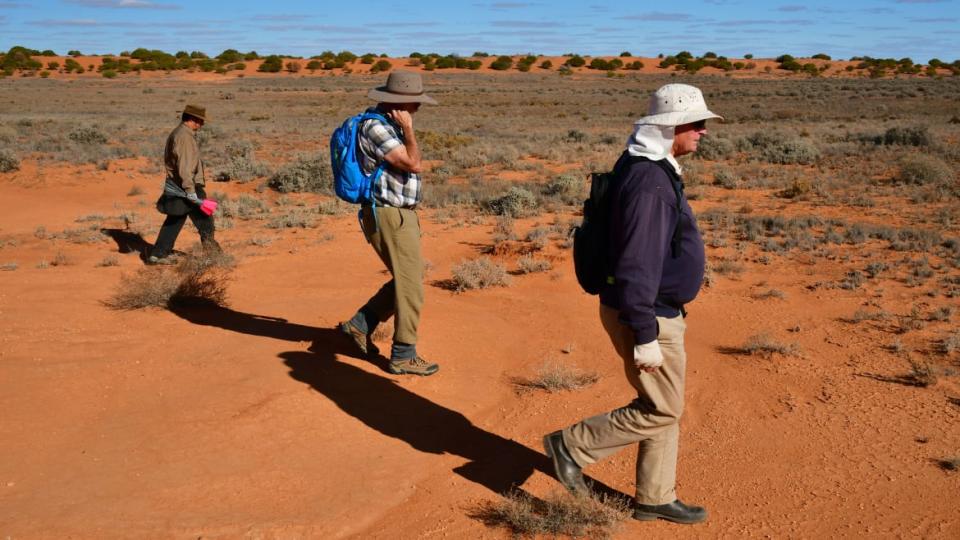
Martin Towner and his DFN colleagues marching through the desert on foot.
The scientists sifted through past investigations and concluded that mistaken fireball-meteorite pairings—where scientists observe a meteor falling, go looking for it on the ground and find the wrong space rock—are probably rare. As in, occurring in no more than one in 50 meteorite investigations also involving strong fireballs.
These mistaken identities, however rare, are a big deal. We’re getting better and better at detecting and analyzing fireballs. The U.S. military even tracks them using various sensors and periodically releases the data. The most recent release, this spring, included data on around a thousand fireballs dating back to 1988.
The data—a fireball’s speed, duration, brightness and color—offer hints at a meteor’s internal structure. The faster a meteor is, the farther away from Earth it may have originated. Color, brightness and duration might indicate a meteor’s mineral composition and size.
Finding a meteorite on the ground gives scientists an opportunity to confirm, and add to, any conclusions they might draw from observing a fireball. Maybe a particularly fast fireball seems like it might have come from really far away—perhaps even traveling to Earth from beyond the solar system. Scientists would want to know what minerals make up such a strange, far-traveling rock. The implications for planetary formation are profound.
But these comprehensive analyses of fireball-meteorite pairings only work if space-rock-hunters pair the right fireballs and meteorites. Mismatch fireballs and meteorites, and they might draw all the wrong conclusions.
Because fireballs are rare, and finding an intact meteorite is even rarer, complacency can set in. Scientists witness a fireball, go looking for the meteorite, find one in or near the projected impact zone and just assume the two things are related.
As the Australians found out, that’s not a safe assumption. There are just enough meteorites littering Earth that sometimes scientists go looking for one space rock and accidentally find a different one.
Together, the Minimoon fireball and the unrelated South Australia meteorite are “a cautionary tale,” Towner said. “Just because it looks right and is in the right place is not enough—you have to go through the full chain of analysis in the lab wherever possible to confirm it’s the right one.”
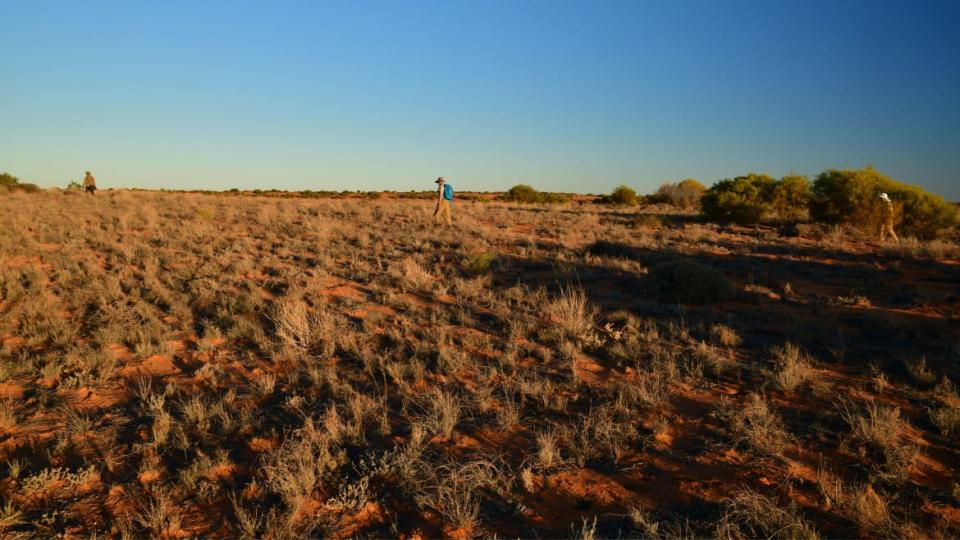
If you don’t, you might end up doing bad science.
There’s a corollary in this unlikely tale. Minimoon should still be out there, somewhere in the Australian desert. “If it landed, it would still be hanging around,” Towner said. “Although, a bit of time has passed now, and the fall area does have sand dunes and plants that can move in the wind or grow, so there's the chance that it may have been buried and lost by now.”
Got a tip? Send it to The Daily Beast here
Get the Daily Beast's biggest scoops and scandals delivered right to your inbox. Sign up now.
Stay informed and gain unlimited access to the Daily Beast's unmatched reporting. Subscribe now.

